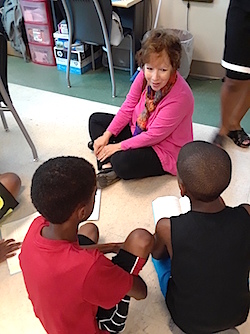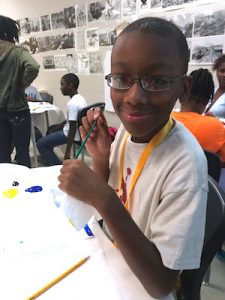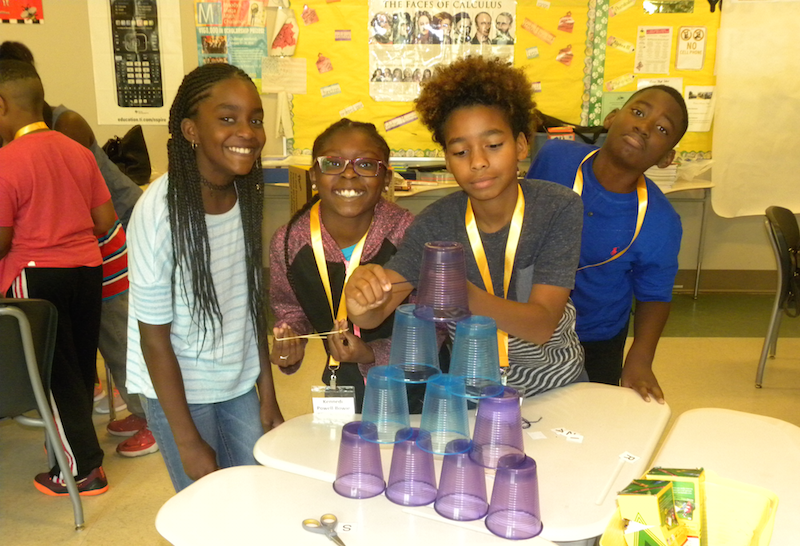 It’s always a good day when we witness children discovering the joy in learning — and Monday at Montgomery’s Carver High School was a really good day for me!
It’s always a good day when we witness children discovering the joy in learning — and Monday at Montgomery’s Carver High School was a really good day for me!
During my visit, I saw enthusiastic kids – ranging from fourth grade to the sixth grade – having fun and practicing their speaking and listening skills by working in small groups finding metaphors and similes embedded in the popular YA book Wonder.
All this, and much more, happens at the Montgomery Education Foundation’s Brain Forest, an acclaimed summer youth experience now in its fifth year.
Designed to serve children living in difficult financial circumstances, Brain Forest is a five week learning-loss-avoidance program aimed at overcoming the well-documented “summer slide” by engaging tween-aged learners in ways that are both fun and consequential.
It has the added benefit of recruiting middle grades teachers and providing them with meaningful and relevant professional learning that can be immediately put into action when they return to their own classrooms for the upcoming school year. From my viewpoint, it looked like the teachers were having fun as well!
Leaving one room, where a student created this simile for me: The car was as fast as the speed of light, I noticed that the volume in the hallway had increased. I was almost immediately joined by four young entrepreneurs who had created posters, slogans, and chants to sell the lemonade they’d just created.
I soon learned that this was a fourth grade project, where they were enacting an actual scene from a book they read. Entering a fifth grade classroom, I heard the teacher tell students they were going to go downstairs to purchase some lemonade and other goodies from the fourth graders.
 “They’ve worked hard and are excited about this project,” she said, “so let’s be sure to thank them for their hard work!” Nodding heads responded to the teacher’s suggestions as they lined up to purchase their treats.
“They’ve worked hard and are excited about this project,” she said, “so let’s be sure to thank them for their hard work!” Nodding heads responded to the teacher’s suggestions as they lined up to purchase their treats.
During my one-hour visit, I spoke with about 20 children. Each and every one was on task, engaged, and learning. When I asked them individually if they were sorry this was the last week of Brain Forest, each boy and girl responded in the affirmative.
What if this happened everywhere, all the time?
As I pulled out of the parking lot to head back to the office, I reflected on what I had just experienced: Joyful children, consequential learning, and teachers engaging students in meaningful ways. And, I began to envision what might happen if this was the norm in every school – every day.
What might happen if worksheets vanished and lectures become lecturettes, followed by small group discussions, student-teacher dialogue, or well-crafted, engaging activities? What might happen if students understood the purpose of what they were learning, why they were learning it, and what they needed to do to reach mastery?
What might happen if what I saw at Brain Forest wasn’t just limited to the summer, but became the norm in schools all across Montgomery and beyond? I bet we’d all experience lots of good days!
 Of course, there are schools where this type of learning is the norm. But, sadly, there aren’t enough of them. Not yet.
Of course, there are schools where this type of learning is the norm. But, sadly, there aren’t enough of them. Not yet.
Driving back to my office, I felt hope for the first time since I read recent reports about “failing schools” in Montgomery. I’d seen what could happen, first hand. I’d confirmed what I already knew – that all our children love to learn when the circumstances are right.
On a broader scale, I’d witnessed the payoff that comes to local communities and society at large when adults and students work together and make learning consequential, meaningful, and—when the time is right—really fun!



0 Comments on "What If All Our Students Lived in the Brain Forest?"